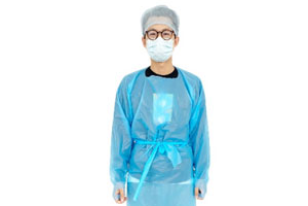19/05/2023
ByWinner Medical
 11392
11392
 Event
Event
Protective gowns is common in hospitals; medical professionals usually wear it to protect themselves from harmful substances.

Introduction: A Brief History of Protective Gowns
Protective clothing has been around since ancient times. Wearing a tunic to conceal your body from the elements and protect you from sharp objects was common in many cultures.
In the early 1800s, workers in textile mills began to wear protective clothing to prevent injuries caused by machines. The first protective clothing was a simple cotton shroud tied around the waist and extended down the legs. This type of clothing was very ineffective and did not protect from injuries.
Over the next several decades, other types of protective clothing were developed, including helmets, boots, and aprons. By the early 1900s, protective clothing had become standard in many industries worldwide.
Today, there are numerous types of protective clothing available, including full-body suits, face masks, neck girdles,
How to Choose the Right Protection: Winner Medical Protective Gowns
Winner Medical Protective gowns are made of different materials and have a range of chemical and physical properties. Here is a rundown of what to look for in a protective gown:
1. Chemical Resistance: A good protective gown should resist common chemical spills. This means it will not release the chemicals into the environment when it's breached, which is important if the garment will come into contact with bodily fluids (e.g., blood).
2. Fire Retardancy: A good protective gown should also be fire retardant. This means that it will help stop fires from spreading more easily.
3. Water Resistance: A good protective gown should be able to resist water well. This means that it won't soak up water and become heavy or uncomfortable when wet.
4. Breathability: A good Protective Gown should be breathable so that you don't get too hot or too cold during an emergency.
Durable: A good Protective Gown should be durable to last through an emergency.